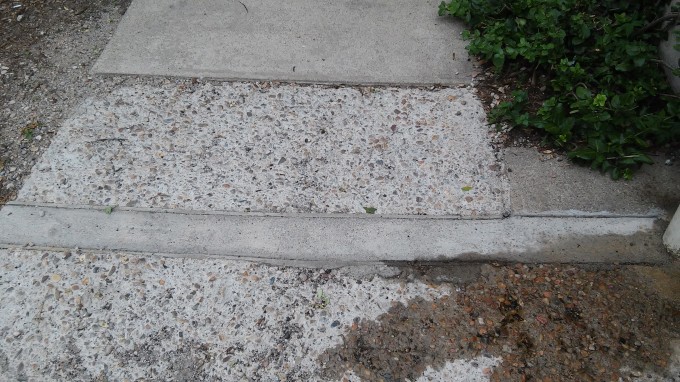
Years ago, the inimitable Jim Houlette wrote a post about deicers and the life of your concrete. Over the last several years, we’ve gotten several comments about that post, most of which started off at “impolite” and worked their way down from there. We haven’t printed those — this is a family magazine.
The gist of those comments has largely been “But my concrete is cracking! It shouldn’t do that!” I absolutely agree — there’s no reason why properly specified flatwork concrete (sidewalks and driveways) shouldn’t last decades. There are lots of examples in neighborhoods throughout Denver of concrete slabs that have witness stamps from the 50s and 60s.
Jim’s post does a great job of discussing the specifications for a good outdoor slab — we demand a 4,000 psi+ mix with entrained air and a very high water-to-cement ratio on our projects. What he doesn’t cover is why that air entrainment is so important for durability. Entrained air in concrete isn’t something you can see with the naked eye — it’s microscopic bubbles that spread throughout the cement paste. Once the concrete cures, these tiny voids remain, providing relief from the pressures built up by freezing water.
So why are some people’s driveways cracking? Why is the sidewalk pictured above in such sorry shape, when the next panel — also dating from 1962 — appears fine?
The slab above looks the way it does because water is, fundamentally, bad for concrete. The wet spot is from a leaking downspout, and every time that water freezes, it puts stress on the concrete that it has soaked into. While air entrainment can help mitigate the effects of water freezing and thawing, it isn’t magic. Enough cycles (and enough water) will start to spall any slab. This is true of any location that gets wet and stays wet all winter — such as the spot on your driveway directly under your wet tires, or a sidewalk that gets soaked regularly by gutter overflow.
Another possibility is, unfortunately, bad concrete. If the spots that are starting to flake aren’t in a spot that is routinely exposed to free moisture during the winter — or if the whole slab is starting to flake — it may be caused by one of (or a combination of) several errors in concrete placement. Jim discusses excess water and overwork in his post, but there’s also the possibility that the air entrainment wasn’t up to the specified level. It’s safe to say that this is very rare, but it’s possible. Fortunately, there’s a test — ASTM C 457-90 — which can be performed to examine the air entrainment in concrete after the fact. This test isn’t cheap, and you’ll end up with a 6″ hole in whatever slab you’d like tested.
Jim’s original advice remains excellent — only use products that are designed as deicers, use them in moderation, and remove any excess to prevent damage. The only thing that I would add is to make sure that your gutters don’t drain across your sidewalks — and if you’re seeing problems with your concrete, work with someone who has the expertise to evaluate your situation.








